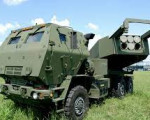
Iranian Shahed-136 Drone Technology
by:
Hendrikus Franz Josef, M.Si\
(International Relations Observer, CEO The
https://www.youtube.com/@thehendrikuscenter2794)
The Iranian military has been making headlines in recent years with the development and deployment of advanced drone technology, including the Shahed-136 drone. This unmanned aerial vehicle (UAV) is a significant advancement in
The Shahed-136 drone is a long-range UAV with a reported range of up to 2,000 km (1,200 miles) and an endurance of up to 24 hours. This makes it well-suited for surveillance, reconnaissance, and strike missions, as it can travel long distances and stay in the air for extended periods of time. The drone is also equipped with advanced sensors and cameras, including high-resolution electro-optical and infrared cameras, allowing it to gather detailed intelligence on potential targets.
One of the most significant features of the Shahed-136 drone is its ability to carry and launch precision-guided missiles. This makes it a versatile platform for both reconnaissance and attack missions, as it can quickly switch from observing a target to engaging it with missiles. The drone can carry up to eight Sadid-1 missiles, which are reportedly capable of hitting targets up to 100 km (62 miles) away with a high degree of accuracy.
The Shahed-136 drone also has advanced communication capabilities, including encrypted data links that allow it to communicate with ground-based operators and other UAVs in the area. This makes it an effective tool for coordination and collaboration with other military assets, increasing its overall effectiveness on the battlefield.
While the Shahed-136 drone is a significant advancement in Iranian drone technology, it has also raised concerns among other countries in the region and beyond. The drone's long-range capabilities and precision-guided missiles make it a potential threat to regional stability and security, as it could be used to carry out attacks on targets in neighboring countries or on naval vessels in the
In response to the development of the Shahed-136 drone and other advanced Iranian drone technology, the
While the Shahed-136 drone is primarily associated with the Iranian military, there have been reports of the drone being used in the ongoing conflict in
The use of advanced drones in the conflict in
The use of the Shahed-136 drone by pro-Russian separatists would be a significant development, as it would represent an expansion of Iranian drone technology beyond the
The deployment of advanced drones in the conflict in
However, the use of drones in warfare also raises concerns about the potential for civilian casualties and the ethical implications of using unmanned systems in combat. As drone technology continues to advance and become more widely available, it is important for policymakers and military leaders to carefully consider the implications of their use in conflict zones and ensure that they are used in a manner that is consistent with international humanitarian law
In conclusion, the Shahed-136 drone is a significant advancement in Iranian drone technology, with advanced features that make it a formidable asset on the battlefield. Its long-range capabilities and precision-guided missiles make it a potential threat to regional stability and security, and have raised concerns among other countries in the region and beyond. As the development and deployment of advanced drone technology continue to accelerate, it is likely that we will see increased investment in counter-drone technology in the coming years.
Opini Lainnya
 High Mobility Artillery Rocket System
High Mobility Artillery Rocket System
High Mobility Artillery Rocket System by. Hendrikus Franz Josef, M.Si\ (International Relations Observer, CEO The Hendrikus...
 Koleksi Online BPAD DIY Tahun 2013
Koleksi Online BPAD DIY Tahun 2013
Untuk meningkatkan pelayanan informasi kepada pemustaka, BPAD DIY pada tahun 2013 ini melanggan koleksi digital on-line sebanyak 3...
 PENGEMBANGAN POTENSI DIRI PUSTAKAWAN MELALUI KETRAMPILAN KOMUNIK
PENGEMBANGAN POTENSI DIRI PUSTAKAWAN MELALUI KETRAMPILAN KOMUNIK
Pustakawan sebagai individu memiliki potensi diri yang dapat dikembangkan secara optimal. Pengembangan diri ini dapat terlaksana...
 From Sister Province to Sister Libraries: Sebuah Kesempatan Kerj
From Sister Province to Sister Libraries: Sebuah Kesempatan Kerj
Tanggal 25 Oktober 2010 menjadi momen bersejarah bagi Provinsi DIY dan Kyoto Prefecture. Peringatan 25 tahun kerjasama antara...

 Kegiatan Penyususnan Katalog Induk Daerah (KID)
Kegiatan Penyususnan Katalog Induk Daerah (KID)